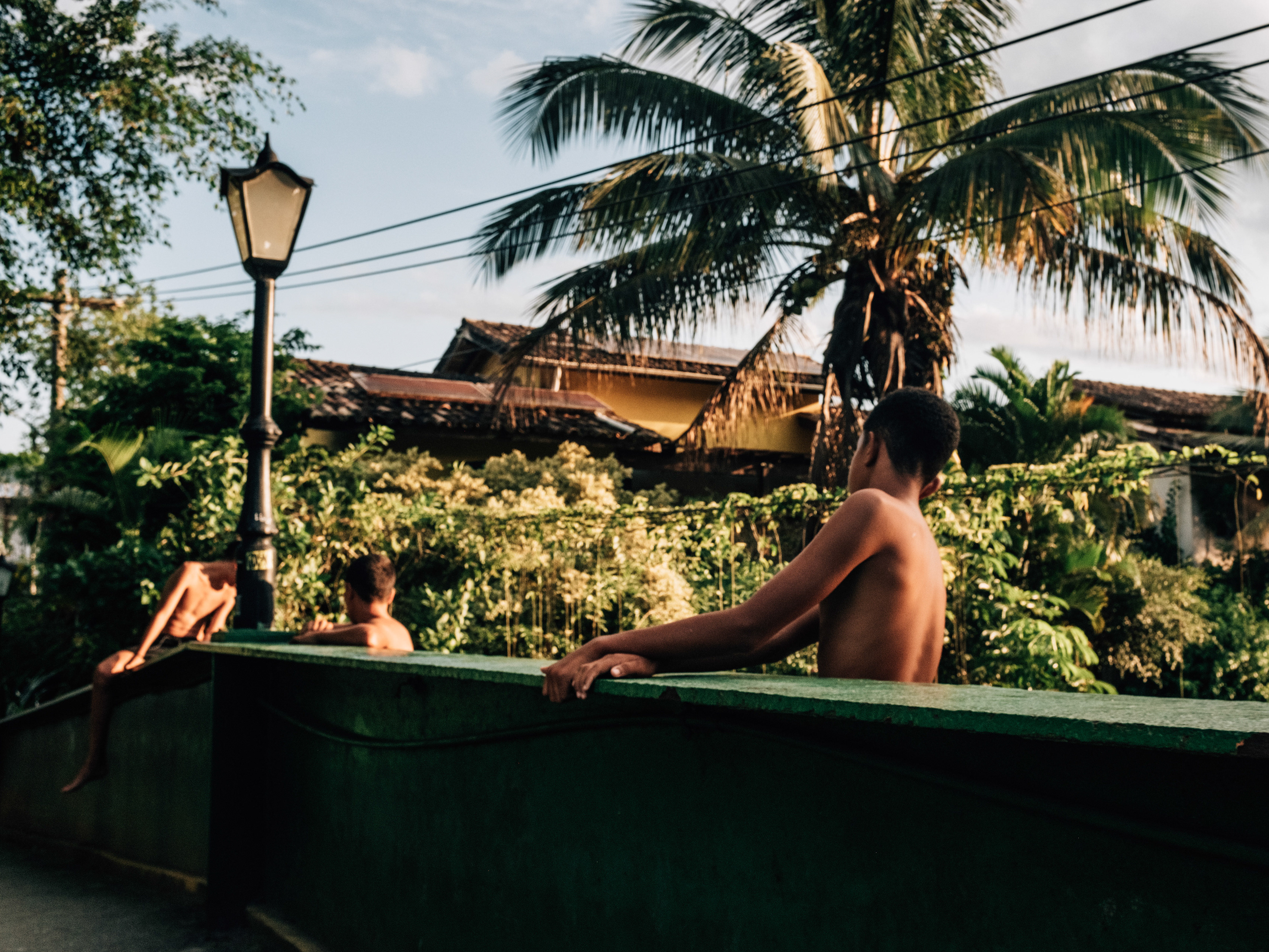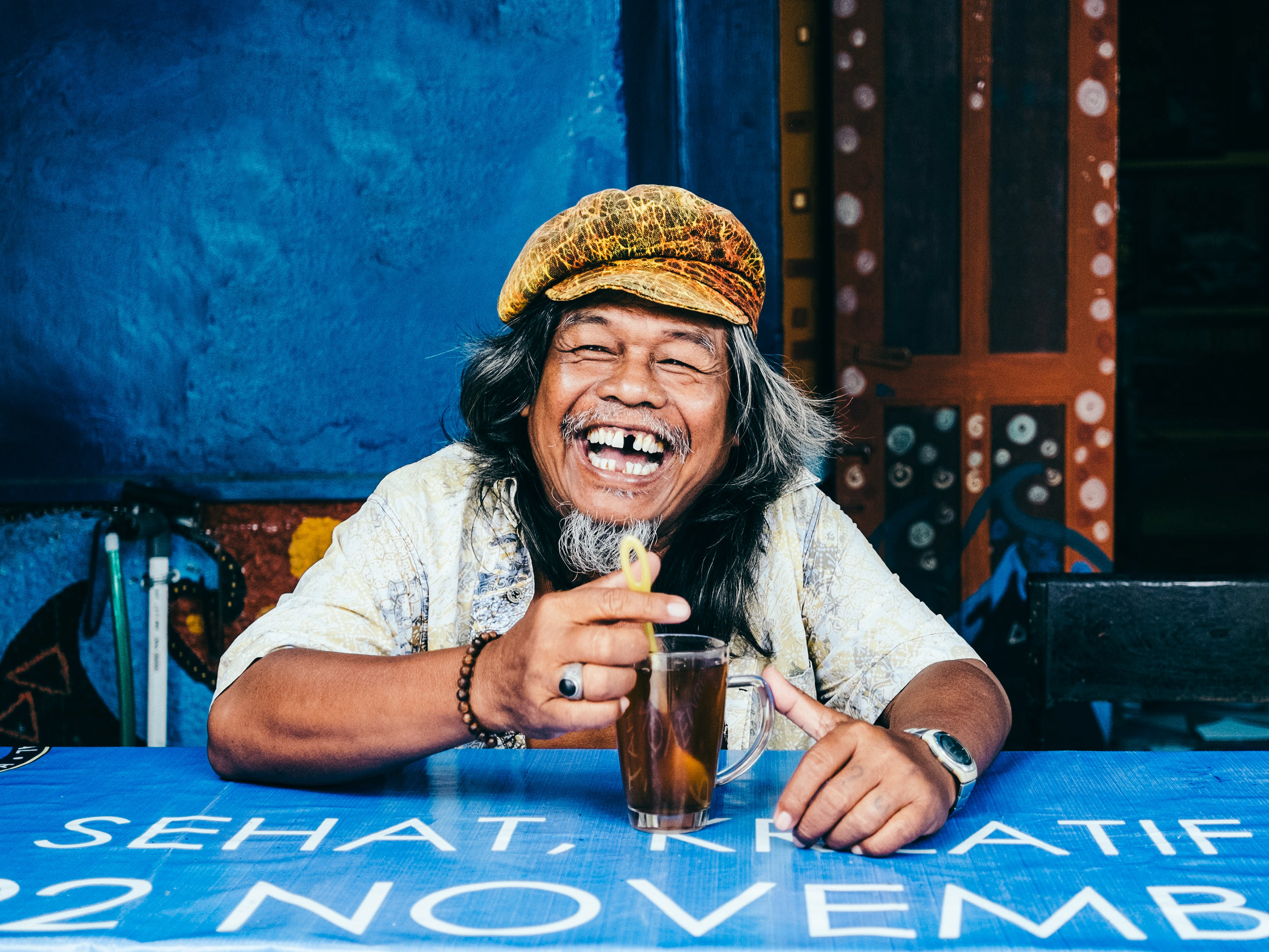On our way to the border of Pakistan and India where a ceremony for lowering the flags takes place every day. Thousands of people visit this ceremony every day. We had to wait over an hour on the queue with our car where this man sold (salty) popcorn for the attendants.
Pakistan Zindabad - Long live Pakistan.
This is the Pakistani chant at the border of Pakistan and India for the daily flag ceremony, where soldiers (like the one in the background) compete with dancelike moves. They throw their leg as high as possible and their skills are rewarded with the cheering of the thousands of people, who are attending the ceremony every day on every site of the border and improve their patriotism beginning at a very young age. An interesting, impressive but also disturbing and confusing scenery.
This is the Pakistani chant at the border of Pakistan and India for the daily flag ceremony, where soldiers (like the one in the background) compete with dancelike moves. They throw their leg as high as possible and their skills are rewarded with the cheering of the thousands of people, who are attending the ceremony every day on every site of the border and improve their patriotism beginning at a very young age. An interesting, impressive but also disturbing and confusing scenery.
He was manic to get a picture with us in front of the faisal mosque. This guy was definitely the most outstanding character in this area. He also told me he's the minister of communication. I highly doubt it.


Islamabad von oben
High above in the hills of Islamabad, where scattered families and friends meet. The air is lighter and not that sweltering like in the city below. The people are gathering and enjoying the calm atmosphere and the beautiful view. The air is filled with the smell of freshly cooked currys and lightened charas while the sun slowly creeps behind the treetops.
The children of Babusar - After a couple of days in the cities of Pakistan we continued our journey into the northern part, where we had to cross the Babusar pass with a heigth of 4.173m. After the pass we were driving down serpentines for a very long time, whereby we had to stop for cooling down the breaks. Immediately a bunch of curious children from the village nearby came towards us to hang around.
Getting close to the Nanga Parbat, the 9th highest mountain of the world, is not only a physical challenge but more a mental one. Even before starting to hike we were facing one of the world's most dangerous roads. I could easily insert a deep quote about overcoming my fear of heights, but it's more like that. With sweaty hands in the beginning I started to appreciate the jeep and it's loud pakistani music in a surreal way, while we were driving uphill for over an hour with the hundreds of meters deep abyss sometimes only centimeters next to us.
Nature at its best - Leaving the Nanga Parbat behind and getting even deeper into Pakistans mountains. Snowy peaks, dry and bare mountains below and the greenest valleys only divided by a rough river in between. I've never seen landscapes like this before. On our way to Karimabad we passed a inconspicuous place at the Karakoram Highway where the Himalaya, the Hindukush and the Karakoram range meet. Together with the Pamir range it is the highest mountain range of the world with 92 peaks above 7.500m. During our whole way it was absolutely impossible to stop watching out of the window at the apparently neverending scenery of beautyness.
Landscape photography is definitely something I'm struggling with. It will never touch me as much as people photography does and I don't know how or what to capture exactly. But the nature in Pakistan forces you to try at least. Even though I'm feeling very confident with this picture above, it still does not reflect the real beauty of it. It seems to be impossible to me to capture the enormous scenery in Eagles Nest in Karimabad. This was the shortest, but most impressive hike to me. I've only expected a short one hour hike to our tent for the next day, but due to a landslide we had to take a different way and ended up on a three hour hike and gaining a better view on the scenery above with every step we took.
The longest hike started after two nights in Eagles Nest up to the Rakaposhi, which is 7,788 m high. It took us two days up to reach the Base Camp at 3,800 m and a full day down. We passed some remote villages and we were sleeping in tents. I used to wake up earlier than the others and the first morning I found two donkeys fighting in front of our tent. After two days hiking we reached the Base Camp next to the Glacier and decided to climb one more hill to finish the day with a sunset.




After leaving Rakaposhi we took another bus ride further into the north into a small village called Ghulkin, where we stayed at a homestay. Up in the north we didn't have any access to the internet for more than a week, which really allowed me to switch off my head from disruptive or simply unimportant information. When we had a walk through the village we met these two charming girls, who surprised us with almost perfect English and a fantastic sense of humour. I haven't laughed like this since ages.
The village life of Ghulkin is super sociable. People are gathering every evening on their main street to chat. The younger guys are meeting every evening on the villages main street for a decent match of volleyball before the sun sets behind the mountains. The smaller kids are playing cricket nearby.


We started several treks and trips from Ghulkin. One day we had the chance to try the probably best apricote cake in Pakistan and on another day we passed a massive glacier hidden below stones and rocks which makes the area look like it is straight from the moon.



During our time in Ghulkin we stayed with Rehman's family in his homestay. His dad showed us the best locations and hikes during the day. He's over 70 years old but more in shape than all of us. His leg got shot during the war in Bangladesh multiple times and he still climbed a 7.500m high mountain in his 60s.
Lake Attabad.
This lake only exists since 2010 and was created as a result of a massive landslide in Hunza Valley, which burried people alive and covered whole villages with water.
This lake only exists since 2010 and was created as a result of a massive landslide in Hunza Valley, which burried people alive and covered whole villages with water.






Everyone knows this moment, when the journey slowly comes to an end. When you pack your bag for the last time and every step from now on won't bring you to a new destination, but only back where you've started. Before that happened we set out for one last hike, to see one of the biggest glaciers in Pakistan, the Passu glacier with a length of 24km. This place has been once again an area where you find a big contrast between the cozy village with its cricket playing kids, green fields and poplars, where we stayed at and the enormous, brutal mountains covered in snow and ice.
On our way back from the north of Pakistan our driver decided to drive us down to Lahore over night in only 23 hours. We only made a few stops to cool down the engine or get some food in the villages. Especially during the night the streets were intense with its overtaking, honking and especially glowing trucks, which enlightened the night.











